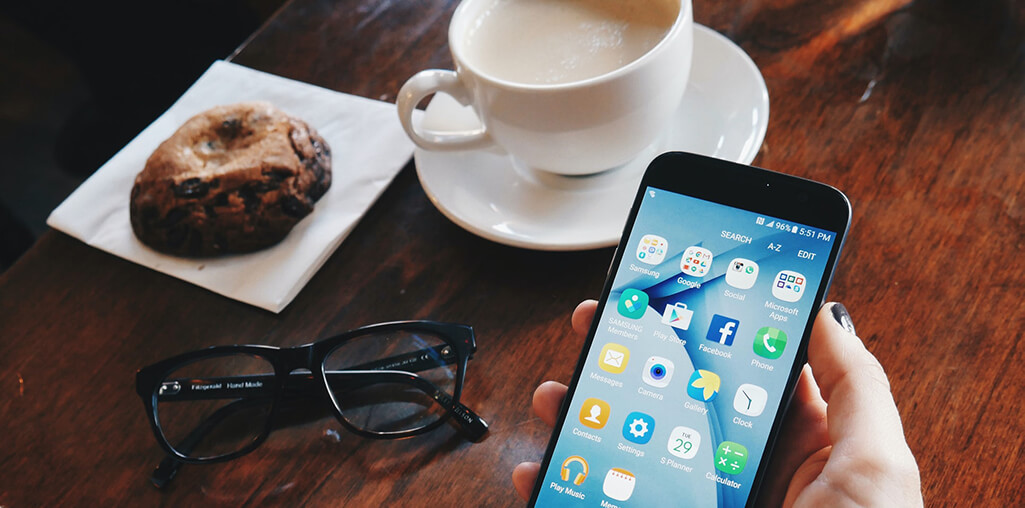In this article I'll explain a simple, fast way to perform user testing, even with no budget or time. A lot of people don't immediately see the value in doing user experience testing, partly because it has the perception of being an expensive hassle or just a waste of time. A client recently told me, "We're already behind on this project and need to get right to the mock-ups."
However, user experience testing doesn't have to be time-consuming. In fact, some very simple testing can be done in one afternoon with no advance notice and very inexpensively. How? I call this the "Coffee Shop Lab". -- It's simple: pick a public place where people hang out (like a local coffee shop), approach complete strangers, and offer to buy their coffee if they'll spend a few minutes giving feedback on your project. Most people will say yes and in one afternoon you can do half a dozen or more interviews with pretty valuable feedback.

Is it scientific, controlled, and extensive? No, but it works very well and you'll be surprised by how valuable the results can be. Doing any amount of user research is useful and it's better than doing none at all. But before you head out the door, here are some tips:
- Dress well. You are representing your business and your client. Be presentable, pop a breath mint, and smile.
- Go to a place where people linger, not a place where people are in a hurry to leave.
- Opt for local mom-and-pop businesses over chain and franchise stores. These types of businesses are more likely to agree to allow you to test there and I’ve found that their patrons are more likely to offer their time.
- Buy something. In addition to pleasing the business owners, you’ll be testing your credit card to make sure it works. It would be awkward if it didn’t, so make sure it does.
- Let the manager know your intentions beforehand and tip the servers if allowed. You'll be soliciting his or her customers, so be respectful.
- Offer to go through the interview with a manager or employee first, so they know what you're doing. That's one bonus user test, too.
- Don’t pounce on people the second they come through the door. Approach them in line or near the sales counter in a friendly, “no pressure” way.
- Groups are more likely to participate than individuals. Maybe they don't want to look rude in front of their friends.
- Make your pitch short and to the point. Write it down and memorize it. "Hi. I have a website/app I need feedback on. Can I buy you a drink/donut/sandwich if you'll spend a few minutes looking at it with me?" Some people like the idea of getting to comment on new technology, especially mobile apps. But avoid explaining too much about your project until after the interview is done.
- Have the interface/site/app queued up and ready to go on your device.
- Clean your device. Wipe and disinfect the screen after each participant. No one wants to touch a sticky, grubby phone with fingerprints all over the screen that a dozen other people with food on their fingers have handled. If people seem sensitive about germs, you can make a show of cleaning the device in front of them and/or wear gloves.
- Don't obsess over the kinds of people to ask and whether or not they're your target user. At the same time, don't ask someone who might struggle to use most websites. You're going for 'general population' types that would be familiar with basic website and mobile app experiences.
- Have a way to record notes, discreetly. Use a pocket notebook or note-taking app. A clipboard may be too large and make folks feel self-conscious. Record your impressions and thoughts after each session. For example, “teenage girl, anime sweatshirt, no difficulty with tasks 1 and 2, struggled with filtering shoes by size for task 3, but ultimately succeeded, liked the app overall, said she shops at the store in real life, pleasant and cheerful.”
As for the interviews, prepare in advance no more than three tasks for the user to perform. They should be simple and the most common use cases for your app. For example, "Go ahead and create a new account" or "Please log in using this username and password" and then "Choose an item that appeals to you" or "How would you [task]?"
The purpose is not to start a conversation about "how good it is"; don't ask what they think. User testing is not about their personal preference, but usability. Instead, focus on how quickly and easily they're able to complete the tasks. Can they perform the tasks with little instruction? Is it immediately clear to them what they need to do? If you get questions, that's a good sign that your user experience might need to be simplified.
This method for quick and cheap UX testing isn't the most elegant, but it's far better than doing nothing at all. It's an informal way to find out how usable your site or app is. And always remember: user testing only informs decisions; it does not decide for you. If all goes well, you'll have some confidence knowing the interface you've designed is pretty good. If there are questions or hesitation, it's an opportunity to find other solutions to make the user experience more intuitive.
Bonus Content: For another great place to test real users, try User Testing from a Tradeshow Booth.
Need help with your user experience or interface design? We do that! Read more here or drop us a line and let's meet at your local coffee shop lab to get started.


.png)
